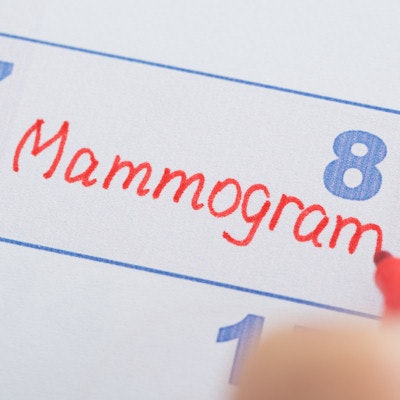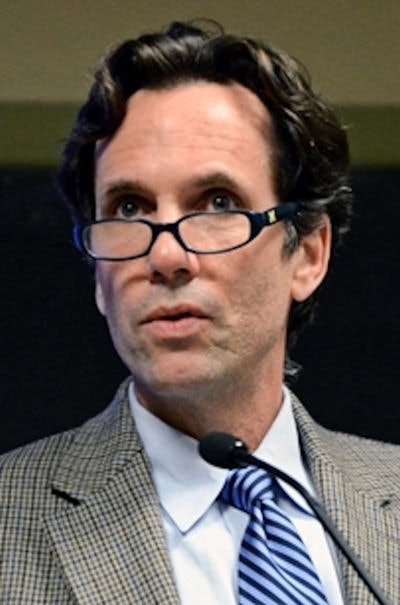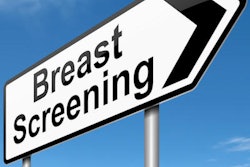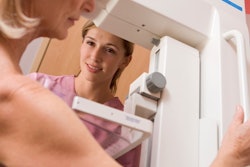
Once breast cancer screening went national in France, takeup of mammography rose by 12%, a study published online on 6 August revealed. The effects were particularly significant among women with less education and lower incomes, suggesting the program reduced socioeconomic disparities.
 Thomas Buchmueller, PhD.
Thomas Buchmueller, PhD.Researchers used a population-based survey to determine the impact of France's national breast cancer screening program on mammography usage. The national program led to a 12% increase in the screening rate, a 29% effect relative to the baseline mean, according to the study authors Thomas Buchmueller, PhD, from the University of Michigan Stephen M. Ross School of Business in Ann Arbor, Michigan, U.S., and Léontine Goldzahl, PhD, formerly at the Université Paris-Dauphine in Paris (Health Economics, 6 August 2018).
"I would not have been surprised if the program had not increased screening rates because, before the program was in place, the cost of getting a mammogram was not that high, at least from a U.S. perspective," Buchmueller told AuntMinnieEurope.com. "But, I was also not surprised that there was an effect. ... The program is similar to other ones in Europe, so I would expect that the results would apply to those as well."
Mammography usage overall
Despite the central role organized screening programs play in national cancer prevention strategies, surprisingly little research exists on their impact, the authors wrote. A basic question about organized programs is whether they are effective in increasing the number of women who receive mammograms, which is what the researchers sought to determine.
France first introduced organized screening programs in the late 1980s and early 1990s at the département level, which is a fundamental administrative and political jurisdiction in the country. By 2000, there were 32 local initiatives.
The random geographic dispersion, and the fact France has a centralized healthcare system with uniform benefits and reimbursement policies, minimizes the concern that certain factors such as socioeconomics influenced the demand or supply of mammography, they noted.
In 2004, France established a national program that built upon and strengthened the local programs. It is financed by the public health insurance funds and is overseen by the national cancer institute.
"I was on sabbatical in France and met Léontine at a conference," Buchmueller said. "Talking to her, I learned about the French screening program. One thing that interested me is the way they rolled it out in different areas at different times. It sounded like a nice natural experiment for testing the effect of an organized screening program on mammography takeup."
A few changes occurred during national rollout: The target age range expanded slightly from 50 to 69 years old to 50 to 74 years old, and the recommended frequency for mammography screening increased to once every two years from once every three years.
To determine mammography usage, the researchers used data from Enquete Santé et Protection Sociale (ESPS), a representative population-based survey conducted biennially since 1988 by the Institute de Recherche et Documentation en Economie de la Santé. The ESPS is administered to a sample of French households randomly drawn from public health insurance files. The researchers used data from the 2000, 2002, 2006, 2008, and 2010 surveys, which are the only years that include questions on mammography.
Under the microscope
Looking at the "prescreening" period, the local programs raised mammography rates among women in the target age range by roughly 6%, or by about 14% of the rate in départements without an organized screening program.
Analyzing the "postscreening" period (i.e., 2004), the comparisons across départements suggest a strong similarity between those with and without an organized screening program in place before 2004. The results for women in the target age range indicate that the implementation of the national screening program eliminated the gap in screening rates between départements with and without a local program.
"For women in the target group who were not previously exposed to a local organized screening program, the percentage with a mammogram in the past two years increased by 13.8%, a 32% effect relative to the baseline rate," the study authors wrote. "Because there was no significant change for women outside the target group, the difference-in-differences estimate of the effect of the program is essentially identical."
In addition, the fact this estimated effect is substantially larger than the estimated effect of the local programs suggests the ways in which the national program strengthened the local programs had a meaningful effect.
When using their "preferred estimate," based on a regression model that centers on individual demographic, economic, and health characteristics, the researchers found the national program led to a 12 percentage point increase in the screening rate, a 29% effect relative to the baseline mean.
Socioeconomic disparities
The breast cancer screening program increased mammography usage, but did it also close the gap for socioeconomic disparities? Looking first at départements without pre-existing local programs, before the national program, strong gradients existed with respect to education and income.
Women with a middle school education were 16 percentage points more likely to report having had a mammogram in the past two years than women with a primary school education or less. The utilization rate was higher for women with high school educations and those with university degrees. The ratio between the rate for the highest education category to the rate for the lowest category was 1.79. The percentage of women with a recent mammogram also increased with income.
After the national program, mammography rates in those départements increased for all education and income categories, though the change was generally larger at the lower ends of each distribution. The changes were 18.3 and 20.9 percentage points for the lowest education and income categories, respectively, compared with just over 6 percentage points for the highest categories.
In départements with pre-existing local programs, the baseline gradients were less steep, which suggests organized screening had already reduced socioeconomic disparities there, according to Buchmueller and Goldzahl.
"For those areas, we also see greater increases over time for women in lower education categories, though, as would be expected, the differences were less pronounced than what we observe for départements that went from having no program to implementing the national program."
After the national program, the ratio of the mammography rates for the top and bottom education category and income categories were similar in the two types of départements.
"The results indicate a strong negative relationship between socioeconomic status and the decision to obtain a mammogram through the organized program," they added.
In terms of future research, Buchmueller and Goldzahl obtained aggregate mortality data and would like to test whether mortality fell after the national program was in place, Buchmueller told AuntMinnieEurope.com.
"This is a bit tricky to do, however, because if better screening reduces mortality through earlier detection, these effects will not be evident immediately," he said.



















